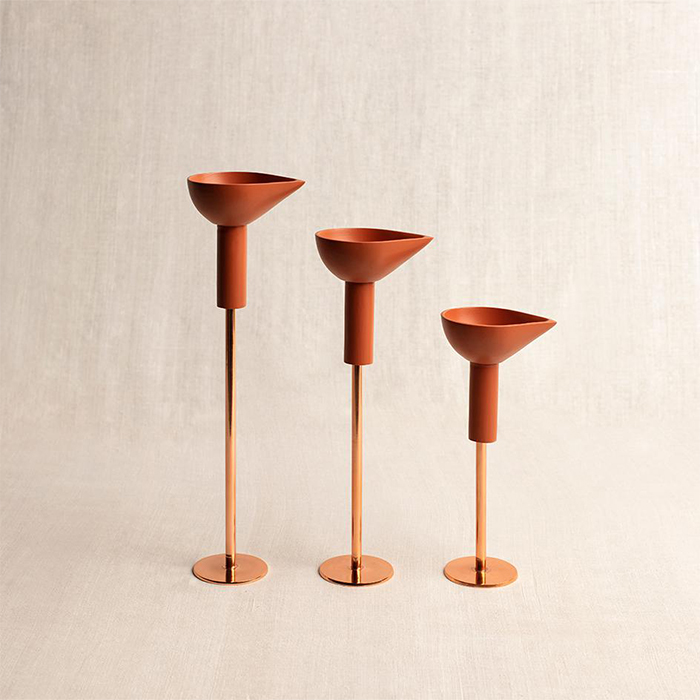Maison & Objet 2014 with Luka Luna
The Parisian shop’s founder takes us through her highlights from the Paris Design Week event

by Caroline Kinneberg
While design weeks in London and Milan are oftentimes as much about marketing and events as they are showcasing new designs, Paris Design Week is considerably more retail-oriented. This is especially true at its main attraction, Maison & Objet, where people have their wallets out and homes waiting to be filled. “I’m always excited to discover new creations, to feel alive intellectually as well as emotionally,” explains Chu You, who founded design shop Luka Luna in Paris’ Marais district with her brother in 2001. Though her feelings are mixed when she enters the tradeshow’s doors. “At the same time I’m stressed because the show has become just enormous.”
From among the 3,000 exhibitors at M&O, Chu has the difficult task of purchasing pieces for her shop. Since the store is just 80 square meters, she sticks to smaller items—most often by independent designers. “They have less means and they’re less known; I find them very courageous. And often they’re more daring—they don’t have a director of communication, of marketing.” Chu tried to avoid fads as well, emphasizing emotion over function, “I find that the world today is difficult, moves extremely fast and feels cold—given, for example, the relationships we have across screens and devices. I find it extremely important now to have suspended moments, instances that are ours alone. Things become timeless when we have a personal connection with them. They remind us of a film, a text, a sensation, a smell. We create memories of those objects.” In search of such objects that would hopefully evoke a certain feeling, we recently walked the show with Chu, who pointed out her favorite discoveries this season.
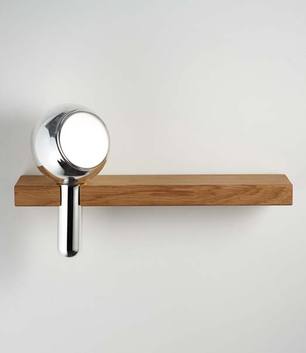
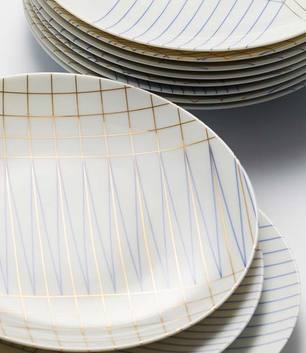
TH Manufacture
The ethos of TH Manufacture is that design is intrinsically linked to place. Porcelain from Limoges, glass from Italy—but conceived for the company in a contemporary vein. Founder Jean-Baptise Ceaux also believes that an object’s particular energy originates not only from where it was made, but who it was made by. As such, everything produced for the new Paris-based brand is handcrafted and reveals an interesting human backstory. The product that drew Chu to TH’s stand, “Yve Hand Mirror” is inspired by the technical glass industry based near designer Maarten Baptist‘s Dutch hometown. The clever mirror is technically 3D, yet ultra lightweight and perfectly flat.
French graphic designer Leslie David based her silkscreened “Mix and Match” plates off childhood school notebooks, while illustrator Jules Julien updated Da Vinci’s layering technique sfumato for his incredibly smooth-to-the-touch “Collection Blanche” plates. Umut Demirel’s magnetized “Attractive Mirror” stems from the common habit of checking out one’s reflection before leaving the house.
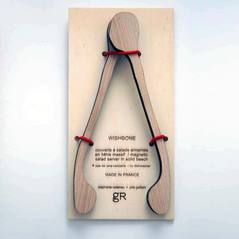
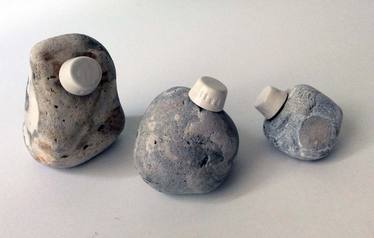
Stéphanie Radenac
Stéphanie Radenac has worked in fashion and textile design, opera scenography, publishing and window design—all of which comes through in the eclectic range of offerings from her “emotional design” brand. She devises experimental objects that push humans to think, feel, laugh, smile, reflect and become more aware. Her pieces include the whimsical “Wishbone” salad server (€30)—which is attached by a magnet—and a charming screen-printed pillow (€40).
Perhaps most engaging is Radenac’s 2ml vial hidden inside a rock—ready to be filled with your secret potion of choice—completed with a porcelain cap to be engraved with a message of choice including: “extase,” “plenitude” or “altitude.” Chu says she’d fill one with an “elixir d’amour.”


Moustache
Chu was fascinated by Moustache‘s entire selection of products celebrating the company’s fifth anniversary. Constance Guisset’s suspended lights, both soft and strong, animal- and plant-like (but, more than anything, resembling Darth Vader); Formafantasma‘s stool with super-soft perch and salmon skin, discarded by the fishing industry and cleverly tanned like leather; and Jean Baptiste Fastrez’s scarab-inspired lamp, composed of iridescent shells. Among the Paris-based company’s new items is also a mesmerizing, color-producing lamp by super-talented Ferréol Babin, one of a handful of young French designers highlighted this year by M&O as rising stars.
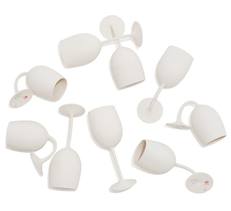
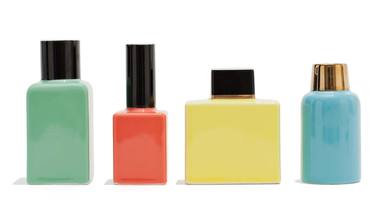
Danish Crafts Council
Some of the most popular stands at Maison & Objet are those that champion regional design, from Design Stockholm House to government-backed Korea Craft and Design Foundation. This year the Danish Crafts Council—which aims to bring recognition to local artisans as well as Danish design in general—stood out with a curated selection of contemporary craftwork that emphasized sustainability. Chu’s favorite product on display was the group of contorted ceramic wine glasses by Claydies, a team of two women who met at art school and have been working together ever since. Their wine glasses (€106 each) show how simple design can influence behavior: one glass you’ll instinctively wear like a ring, another you won’t be able to put down until you’ve finished sipping.
Other standouts from the Danish Craft Council were Agnes Fries‘ porcelain vases in the form of iconic perfume bottles—which, much like the beauty products they refer to, can either be functional or design objects in themselves.
Images courtesy of respective brands
